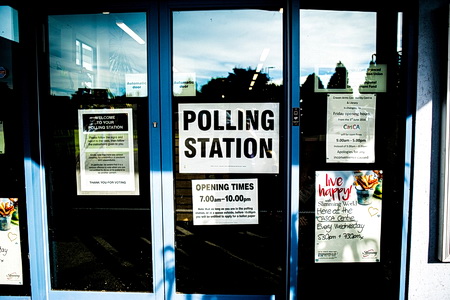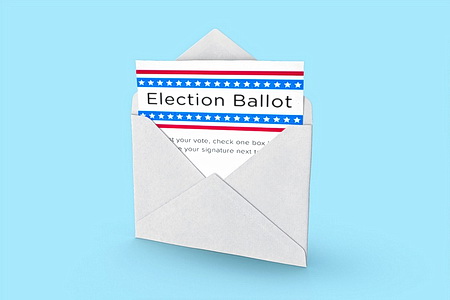As we all have been watching the catastrophic results of this pandemic, many of us have also been attentive to the countries that got hit the worst. In the beginning, it was China, then Italy and now the United States, although some might argue that the numbers of those affected here is in direct relation to the amount of testing that was done since the US has done far more testing per capita than any other country.
Regardless of how the numbers were obtained, the result is that, as of the writing of this blog, there are 2,760,664 confirmed cases of the virus and 128,951 deaths. But the beginning of the year was in a happier tone and the future looked bright. The economy was doing well. And then – COVID-19 and with it, not only did the situation in the country flip upside down, but the certainty regarding the US Presidential Elections 2020 seems to have blurred.
While President Donald Trump isn’t ready to postpone the Presidential Elections for 2020, his supporters are skeptical about how the elections will proceed as per the plan. The coronavirus pandemic continues to affect hundreds and thousands of Americans every day and one can assume that the fear and panic will stay with people all the way up to the elections.
At present, everyone in the US has the same question – will the Presidential Elections 2020 proceed as per the plan? If yes, how?
From the candidates to the voters, nobody has a clue of how to cope up with the impact, as we have hit unexplored territory. Let’s see if you can find answers to some of your questions.
How COVID-19 is Impacting the US Presidential Elections
The 46th US Presidential Election is set to take place on November 3rd, 2020. Americans have two options; either to re-elect Donald Trump as their president or give former Vice President Joe Biden a chance at running the country.
However, it is not clear about how voters will exercise their right to vote while we struggle with the ongoing pandemic. Citizens are looking to the government to devise a fair, free, secure, accessible and above all, a safe method that can enable them to cast their votes.
People are reluctant to step out and join a crowd that will be gathered on Election Day. Since the WHO keeps stressing the importance of social distancing, the idea of conducting elections doesn’t seem to be the right idea. The question is – if people can’t vote in the traditional way (ballot voting), then what?
The COVID-19 outbreak has left little room for the regular assembly-driven, interactive process of election campaigns, primaries and party conventions. The elections in the US are decentralized and therefore, every state has to make their call whether they want to continue with the current schedule of moving the elections forward.
What Voting Options are Available?
While moving ahead with the traditional voting method doesn’t seem to be the best option right now, different voting methods are being considered.
More Polling Stations in Every District

The first option is to increase the number of polling stations in every district to prevent overcrowding. With a fewer number of voters at each polling station, it’ll be a lot easier for the authorities to follow the standard COVID-19 SOPs, (Standard Operating Procedures), which include maintaining a distance of at least six feet and wearing masks. However, despite being a highly possible option, it is quite costly.
It’ll require the government to hire more staff, train them, provide them with all the needed protective equipment and arrange additional voting machines for the new polling stations. There is also an option to increase the number of days for which voting stays open. However, that too will require additional staff.
Mail-In Voting

This is a contentious issue. An option that is very political and controversial due to the fear of fraudulent ballots being sent, but five states have already elected to do so during their primaries.
Besides the argument of fraud, mail-in voting is extremely time-consuming and costly. It is very expensive and comes with a lot of complications. It’ll require the government to print mail-in ballots, which aren’t the same as the ballots used for-person voting. Moreover, the authorities have to arrange for pre-paid return postage to make sure that the poorer communities can participate as well. Lastly, the processing of the ballots won’t be straightforward. It’ll require specialized machines and equipment and the training of all the workers involved.
All of it revolves around the assumption that the states have mail details of every eligible voter of the country, which is not the case in reality. While the state can have eligible voters to register online, not everyone will abide by it.
If everything does work out as an ideal situation, the state will have to ensure that the public is aware of how a vote-by-mail system works and what their role will be.
Postponing the Election?
Postponing the US Presidential Elections is possible but not a very likely scenario. The President, even if he is willing, can’t postpone the elections unilaterally. The US Congress will have to enact legislation for the postponement of the elections. Since, according to the US constitution, the new President has to take charge on January 20, 2021, there isn’t much flexibility when it comes to this situation.
Therefore, the only option that the state has is to conduct elections while ensuring that all SOPs are being followed and the social distancing is maintained.
Closing Word
No one could have guessed that there’ll be so much uncertainty to the US presidential elections this year. The election campaigns are struggling with the pandemic and the situation doesn’t seem to be ending any time soon. All thanks to this outbreak that is currently in its sixth month with no solution in sight. It will be very interesting how this situation turns out and definitely one for the history books!
